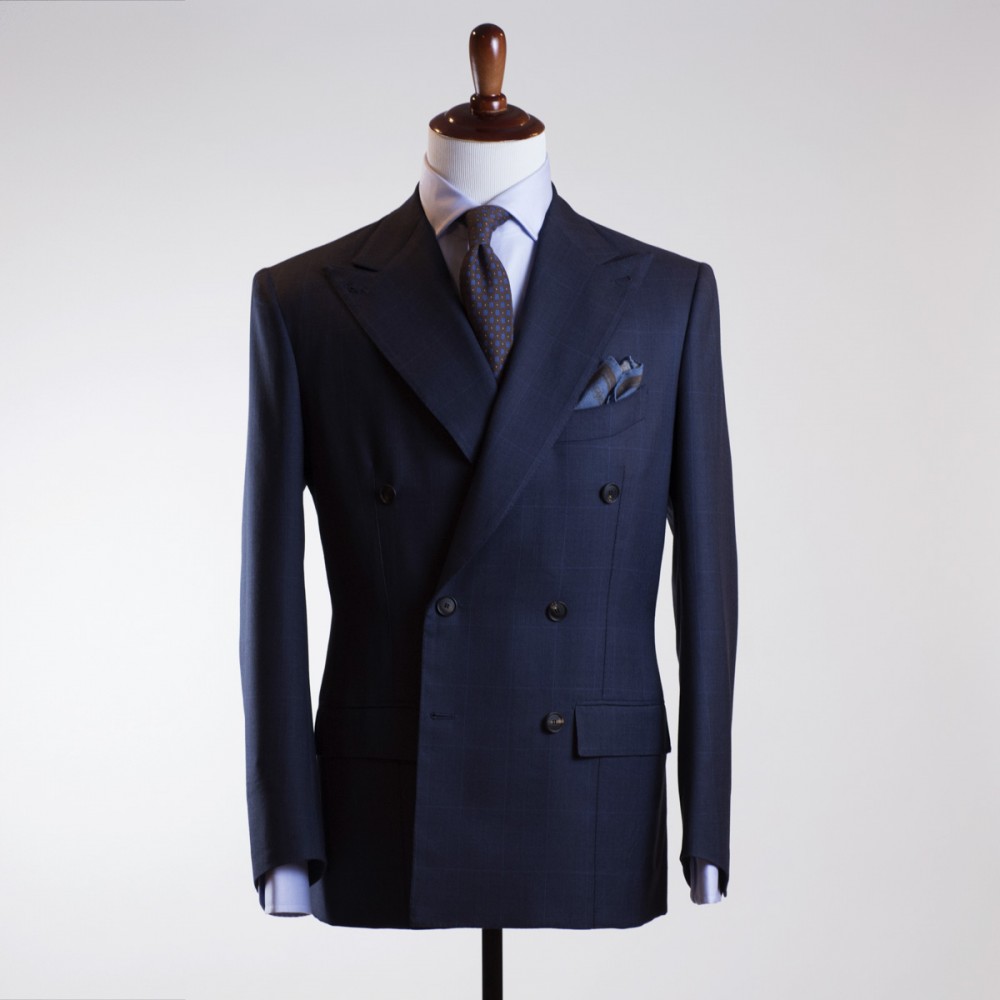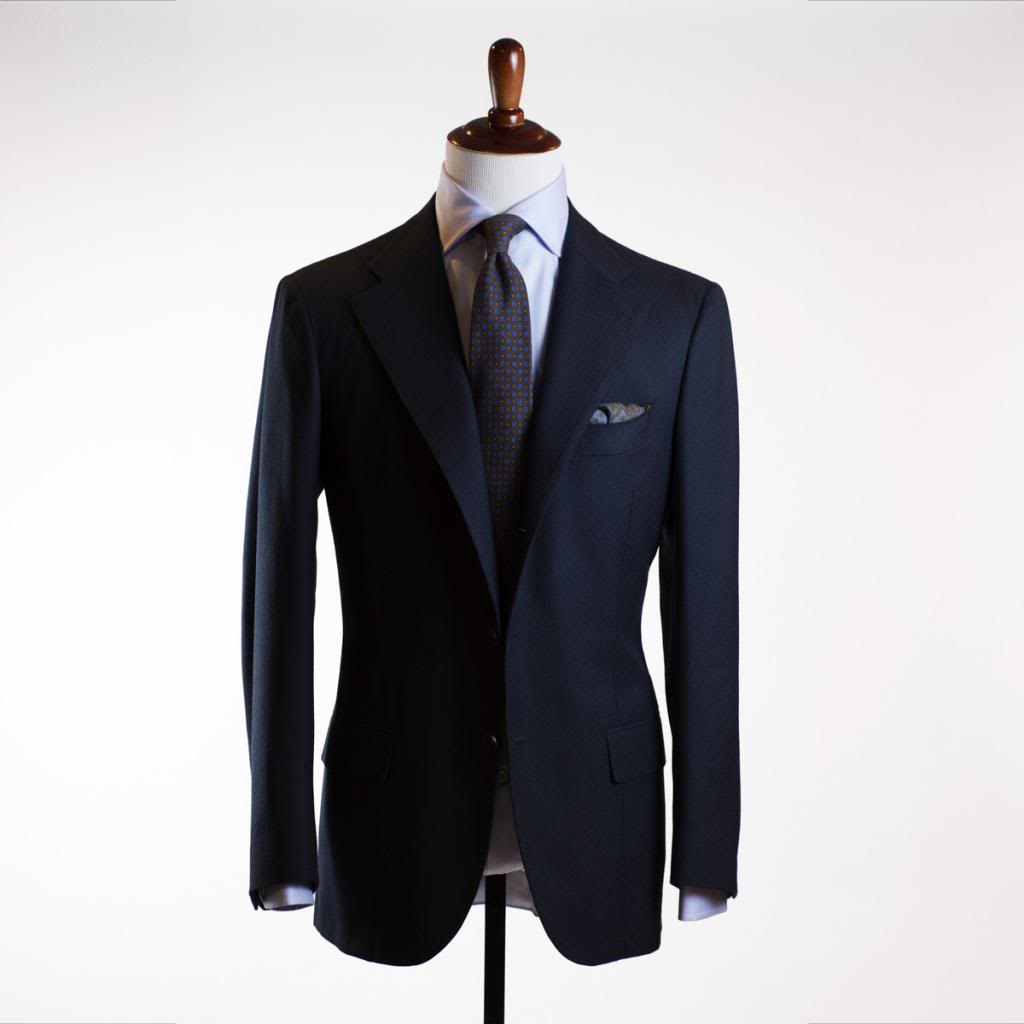Recently I've noticed women wearing dresses with a white center hourglass flanked by curves in black, such as these two. It creates an optical illusion, whereby you see the white section as the wearer's entire body, making her seem slimmer. Sure, your mind knows that there's something hiding under the black part too, but it focuses on the bright, outlined, white section and lets itself be carelessly optimistic about the rest (since white tends to draw more attention than black, the inverse does not work as well).
Vain men who notice this trick will lament their fate as a member of the unfairer sex, the afterthoughts of the fashion world, for whom makeup and high heels and other artifices are taboo. But men, you already have a garment that performs this exact same sleight of hand: the suit.
Discussions of suit fit and silhouette tend to focus on the lines that follow the outline of the wearer's body – how it fits in the shoulders, whether it ripples on the arms or sides. But the lines formed by the lapels on the wearer's chest are just as important, as they frame the area of visible shirt in the same way that the black on the sides of the dress determine the hourglass shape of the remaining white.
To be sure, the suit generally leaves less shirt visible than there is white ground on the dress. Furthermore, the idealized male shape is more of an inverted V, less of the more feminine hourglass. But the principle is the same. A dark color surrounds a lighter colored miniature version of the shape you want.
The suit jacket has the added advantage that the lines formed by the contrast between the jacket and the shirt are reinforced by the lines of the lapels themselves, which run parallel. In the case of a double breasted jacket, this shape is repeated a third time in the pattern of the buttons, at least in the standard six-button configuration.
You can ruin this effect by having a jacket that is too tight, making the lapels bow awkwardly, such as here, or by leaving a distracting triangle of visible shirt and/or tie under the buttoning point, as here.
But a jacket with the right fit does everything for a man that this dress design does for a woman, and has for the last two hundred years running.


